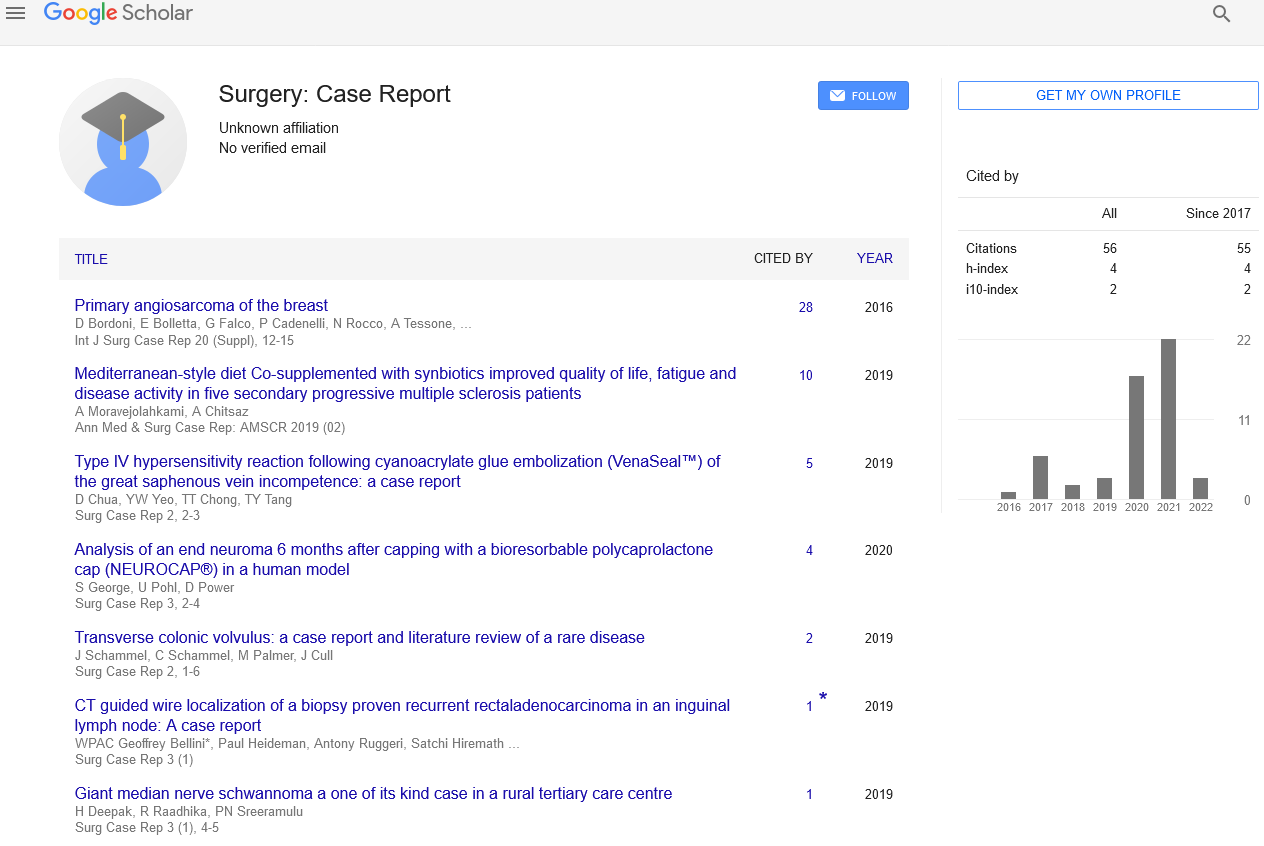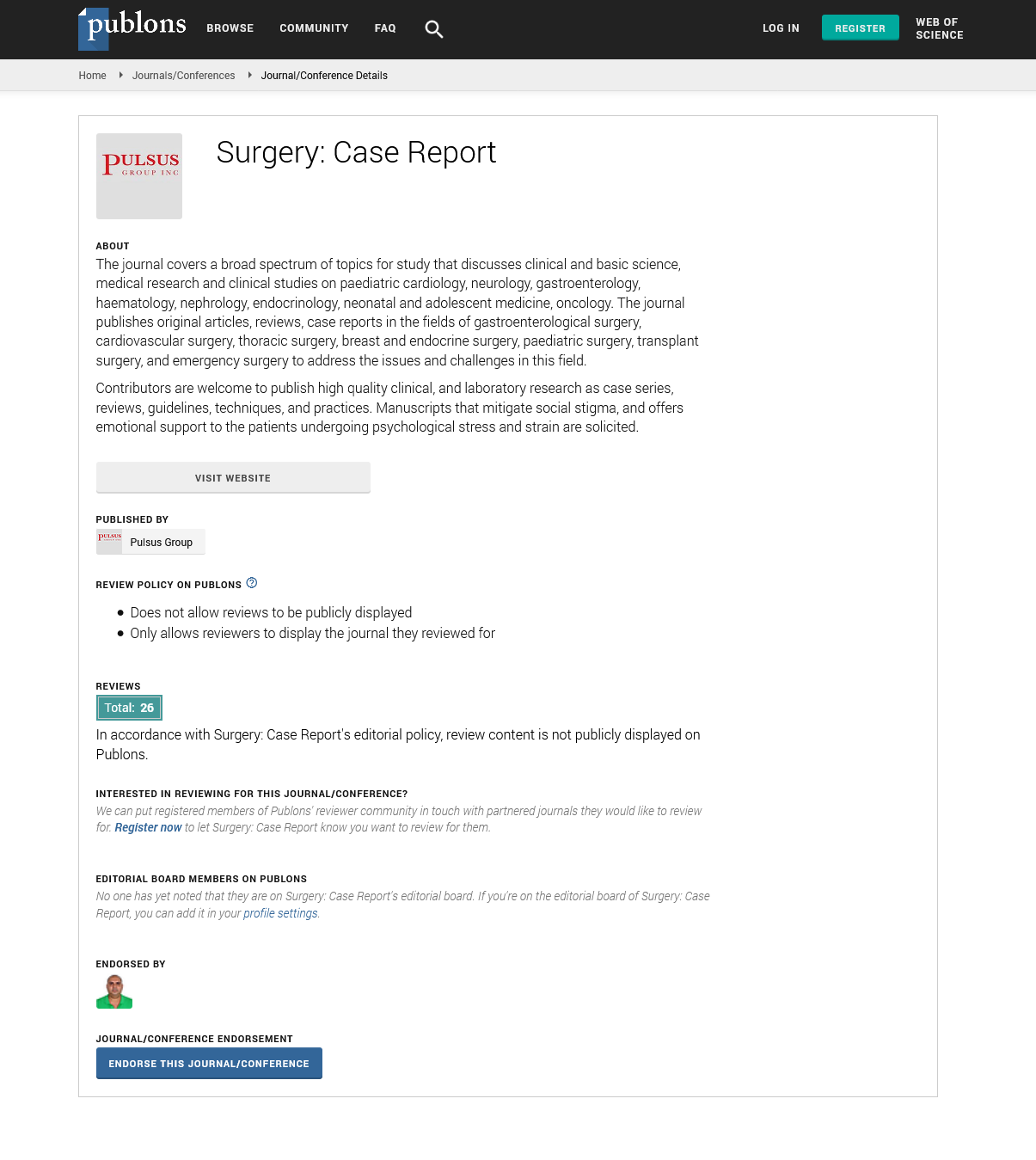Short Communication on Abdominal Hernia
Received: 06-Nov-2020 Accepted Date: Nov 23, 2020; Published: 30-Nov-2020
Citation: Deepthi P. Short Communication on Abdominal Hernia. Surg Case Rep 2020;4:3.3.
This open-access article is distributed under the terms of the Creative Commons Attribution Non-Commercial License (CC BY-NC) (http://creativecommons.org/licenses/by-nc/4.0/), which permits reuse, distribution and reproduction of the article, provided that the original work is properly cited and the reuse is restricted to noncommercial purposes. For commercial reuse, contact reprints@pulsus.com
Short Communication
Abdominal hernia is a bulge or swelling in your tummy (abdomen) or groin (top part of your leg). It happens when some fatty tissue or part of your bowel pushes through a weakness in your tummy wall. Most hernias aren’t immediately life-threatening, but they don’t go away on their own. Sometimes they can require surgery to prevent dangerous complications.
Types of abdominal hernia
Inguinal hernia: In this a bulge appears in your groin – a groin hernia. It happens when you have a weakness in your inguinal canal. Inguinal hernias are the most common type of hernia and are more common in men.
Femoral hernia: This occurs through the opening in the floor of the abdomen where there is space for the femoral artery and vein to pass from the abdomen into the upper leg. Because of their wider bone structure, femoral hernias tend to occur more frequently in women.
Incisional hernia: This occurs when a bulge appears near an old surgical scar. It happens when you have a weakness in your tummy wall caused by previous surgery. An incisional hernia can happen several years after surgery.
Umbilical hernia: This occurs when a bulge appears in or around your belly button. Umbilical hernias are very common in babies but often disappear by the time children reach three years. In adults, paraumbilical hernias are most common, particularly in women during and after pregnancy and in people who are overweight.
Symptoms
• A bulge somewhere on your tummy
• Slight discomfort in your tummy or groin
• A feeling of heaviness or aching in your tummy
Treatment
Abdominal hernias in adults don’t always need to be treated. Your GP can discuss with you whether you’re likely to need surgery. This will depend on your symptoms, your general health, age, which type of hernia you have; it’s size and whether it’s getting bigger. It will also depend on whether your hernia is likely to cause complications, such as a bowel blockage.
Umbilical hernias in young children usually get better on their own. If the hernia is very big or hasn’t gone away by the time your child reaches four years, your doctor may recommend a surgical repair.
Causes & Prevention
Anything that increases the pressure in your tummy can make you more likely to get an abdominal hernia. This includes:
• Coughing, especially if your cough lasts for a long time
• Straining on the loo, which may happen if you’re constipated
• Lifting heavy objects or weights
• Being very overweight
• Being pregnant with more than one baby (such as twins) or having a difficult delivery.






